John I, known as John Lackland, has been depicted as the most villainous king in the history of England. In accounts of his reign, the monastic chroniclers emphasize John’s score-settling, even sadistic, temper and his blatant contempt for the church. Any positive qualities he may have had as a king have been obscured.
The figure of King John also contrasts sharply with that of his brother Richard the Lionheart, the quintessential English hero. Richard has gone down in history as one of the most glorious kings of England, even though he spent only six months of his reign in the country. John, on the other hand, is often labeled as Bad King John, and no subsequent English king would bear his name. John’s reputation for cruelty was cemented by Sir Walter Scott’s historical novel Ivanhoe, which recounts how John takes advantage of Richard’s imprisonment in Germany to usurp power.
The negative image of John is closely related to the dynasty he belonged to: the Plantagenets. This was a lineage of the French feudal aristocracy that dominated the county of Anjou. Their moniker was derived from the sprigs of yellow broom (planta genista in Latin) that their knights wore when going into battle. John’s grandfather—Geoffrey, count of Anjou—married Matilda, heir of Henry I of England and granddaughter of William I, the Norman knight who’d conquered England in 1066. In 1154, after a long succession conflict, the son of Geoffrey and Matilda, also called Henry, was crowned Henry II of England.
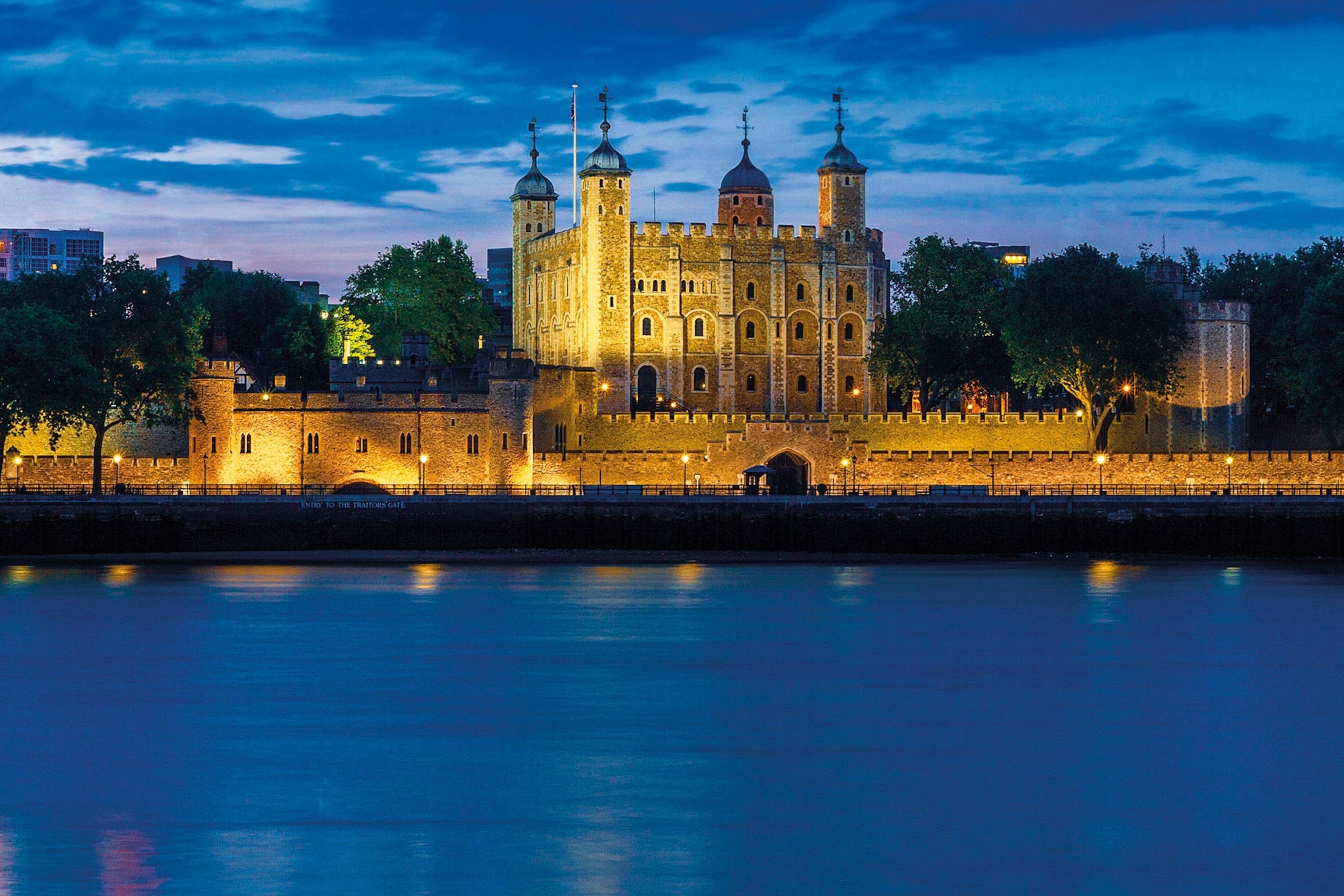
PILLAR OF STRENGTHThe White Tower of the Tower of London was built roughly a century before John’s birth. It was a potent symbol of royal power following the Norman invasion of England in 1066.
ALAMY/CORDON PRESS
Anglo-French empire
As well as being king of England, Henry II also received the dominion of Normandy through his mother. From his father, he inherited the region of Anjou. This inheritance gave Henry II control of northwestern France, and these vast estates were increased further when Henry married Eleanor of Aquitaine, heir to an extensive domain in central and southern France. This collection of territories,which included much of Wales, Ireland, and later Scotland, constituted the so-called Plantagenet Empire.
The fact that Henry and Eleanor controlled such extensive dominions stirred the greed of many, not least their own children. When John, the youngest son, was born, his father had already distributed the titles among his three surviving older sons: Henry, Richard, and Geoffrey. For this reason, the king gave John the title Jean Sans Terre. The Norman French was translated into English as John Lackland.
The mocking nickname and rivalry with his siblings might seem a plausible reason for John to want to claw back some territory and compensate for this unequal treatment from his father. But the truth is that Henry II had no intention of marginalizing his youngest son. In fact, John soon became the king’s favorite, and Henry II spent a lot of time with John in his infancy. After trying in vain to educate John for an ecclesiastical career at Westminster Abbey, Henry planned to secure extensive lands for him by negotiating a future marriage to the daughter of the powerful Count of Maurienne, who ruled a swath of what is today eastern France around the city of Grenoble. But this prompted dissent from John’s older brothers.
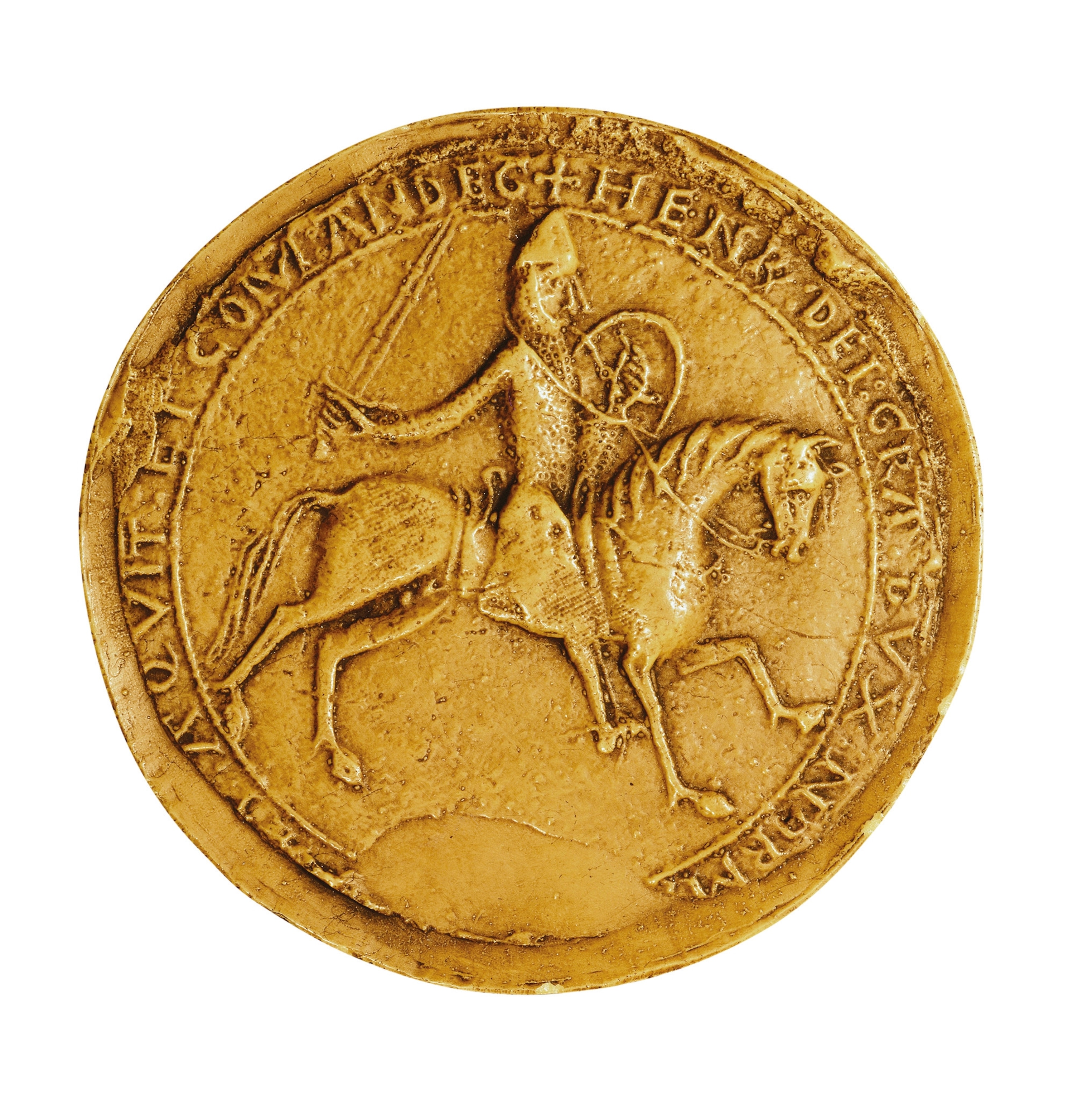
A DYNASTY BLOSSOMSThe seal of John’s father, Henry II, the first of the Plantagenet dynasty. Plantagenet means “blossom of the broom plant” (genet in French), a symbol associated with Henry’s father, Geoffrey of Anjou.
ERICH LESSING/ALBUM
Later Henry II made the Anglo-Norman-Welsh barons who held his dominions in Ireland pay tribute to John for their fiefs, or feudal land. However, John had to return to England after only six months in Ireland, having sparked multiple conflicts with leaders there. He was already getting a reputation for being an irresponsible and capricious politician. A contemporary chronicler, the monk Gerald of Wales, portrayed Prince John at the age of 19: “Caught in the toils and snared by the temptations of unstable and dissolute youth, he was as wax to receive impressions of evil, but hardened against those who would have warned him of its danger; compliant to the fancy of the moment; more given to luxurious ease than to warlike exercises, to enjoyment than to endurance, to vanity than to virtue.”

Countless Adventures for Curious Familes
Limited Time: Bonus Issue Offer
Subscribe now and gift up to 4 bonus issues—starting at $34/year.
(Who was the first king of England?)
The disloyal prince
Another trait that characterized John from a young age was his lack of loyalty. Henry II experienced this in a bitter episode at the end of his life in 1189. Bedbound after a serious jousting accident, King Henry had ordered his faithful adviser William Marshal to prepare a list of traitors who were plotting against him. But when William began to read the list, Henry saw that the first name was that of his own son, John. The king told him,“You have said enough,” and died three days later.
Richard ascended to the throne and John, despite the bitter disputes he’d had with his brother in the past, went immediately to see him to confirm his inheritance. Richard the Lionheart, now King Richard I, received John cordially in Normandy and showed his characteristic generosity. Far from leaving his brother lacking land, Richard immediately granted John all the territories their father had wished him to receive, including the earldom of Nottingham and incomes raised on Sherwood Forest, home of legendary Robin Hood. Richard also conferred on him the important title of count of Mortain. When John married his cousin, Isabella of Gloucester, later that year, he gained the title of marcher lord, and with it control over land on the Welsh border (Marches). To this was added the lordship of Ireland, inherited from his father.
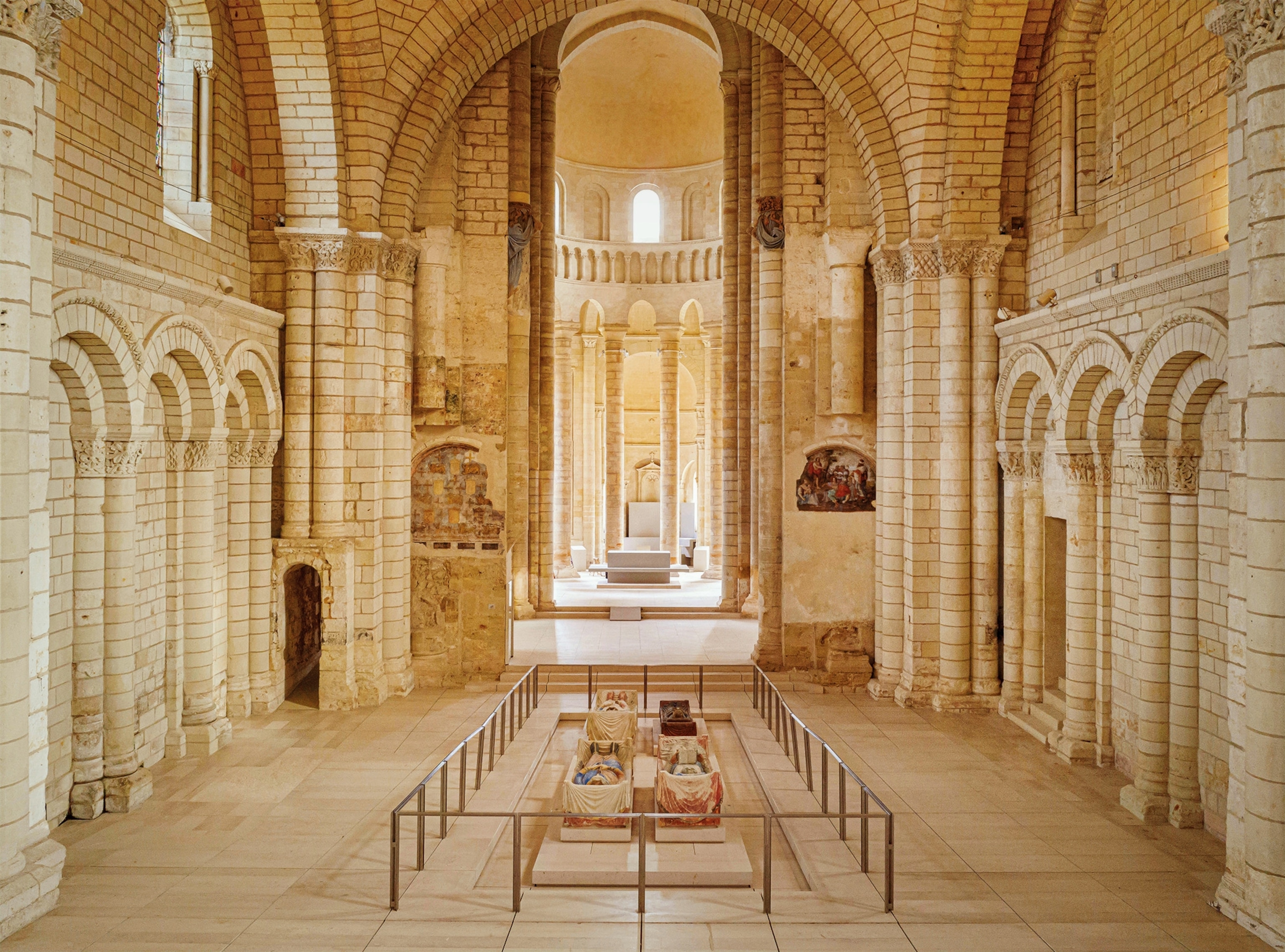
PLANTAGENET ROYAL PANTHEONThe tombs of Henry II and his wife, Eleanor of Aquitaine, lie in front of those of their son Richard I and John’s second wife, Isabella of Angoulême, in the Royal Abbey of Fontevraud, Chinon, central France.
MANUEL COHEN/AURIMAGES
Less than a year after acceding to the throne, King Richard was among the leaders of the Third Crusade who marched to the Holy Land with the aim of liberating Jerusalem from the control of Saladin, the Muslim sultan of Egypt, Syria, and much of the Near East. Aware of his younger brother John’s ambition and lack of scruples, Richard left the government of England in the hands of Chancellor William Longchamp. But John immediately began to plot against Longchamp and succeeded in getting him removed. Meanwhile, John was also traveling the country making his presence felt and implying that Richard would never return. It is also said that John made a deal with the king of France, Philip II, upon the king’s return from the Crusade he’d fought with Richard the Lionheart. Eleanor, in France at this point, tried to rein in her son John, fearing that, with his malleable character, the young man might listen to the advice of the French and plot the ruin of his brother.
Richard left the Holy Land after negotiating a treaty that recognized Muslim control over Jerusalem yet allowed Christian pilgrimage. Later, while passing through Vienna, he was captured by the Austrian duke Leopold V, whom Richard had offended during the Crusades. Leopold handed Richard over to the Holy Roman Emperor. A huge ransom was demanded for Richard’s release. John took advantage of his brother’s captivity to try to take full control of England, but his efforts failed; the Lionheart inspired loyalty even in his absence.
After the ransom was paid, Richard was finally released and back in England. Initially, Richard stripped his brother of his lands, but a year later they were reconciled. Just a few years after that, in 1199, Richard died unexpectedly from gangrene in a wound suffered during the siege of a French castle. On his deathbed, at the urging of his mother, Eleanor, Richard forgave John’s treacheries and named him his successor. Many people, however, believed that Arthur of Brittany, son of John’s older, deceased brother Geoffrey, had a more legitimate claim to the throne, although he was only 12 years old.
(How a teenage girl became queen of England for nine days)
The supposedly impulsive and vindictive character of King John contrasted with the cordial generosity of his brother and predecessor the Lionheart. Being seen as bad was a fatal trait in a world where monarchs needed to forge alliances and maintain loyalties. As soon as John acceded to the throne, he annulled his marriage to Isabella of Gloucester, with whom he had no children, in order to marry Isabella of Angoulême. It was a sudden decision that has sometimes been presented as the result of an infatuation for a 12-year-old girl. In reality, the match was a political calculation. Isabella brought with her rights and allies in the territories of Angoulême. Above all, by marrying Isabella, John prevented her marriage to Hugh IX de Lusignan, a match that had already been arranged and would have brought Lusignan enormous power in the west of France.
The Lusignans protested to their liege lord, the king of France, who summoned John, his vassal in the French territories, to settle the dispute. But John ignored the summons, refusing to recognize Philip II as his superior. So Philip, exercising his feudal power, condemned John as a traitor, stripped him of his territories in France, and gave them to John’s nephew, Arthur of Brittany. Open warfare between Philip and John followed for the lands John held on the continent.
State crime
Despite the nickname Softsword, John demonstrated real military prowess in this conflict. The troops of the Lusignan dynasty invaded Poitou and laid siege to the castle of Mirebeau, where Eleanor of Aquitaine was staying. Upon learning of this, John ran with his army almost 80 miles in two days, broke the siege, and took more than 200 prisoners. Among them was his nephew Arthur of Brittany. John knew that Arthur was seen by many as the rightful heir not only to the French Plantagenet lands but also to the English crown. Arthur was removed to a prison in Rouen, and the unfortunate 16-year-old prince was never heard from again. Some said that John, drunk in a fit of rage, killed him with his own hands; according to others, John commissioned William de Braose, a nobleman who specialized in shady tasks, to do the deed. Arthur’s older sister was imprisoned for life in Bristol Castle.
This was not John’s only demonstration of his ruthless and cruel character. He also had a score of the prisoners from Mirebeau transported to Corfe Castle in southern England with a letter to the governor there ordering him to starve them to death. The order was followed. This setback did not, however, prevent the French, who had far superior military resources, from conquering Normandy in 1204 and two years later conquering Anjou, Maine, and parts of Poitou. The Plantagenet Empire was breaking up.
You May Also Like
(This battle lasted just one day—but forever changed England)
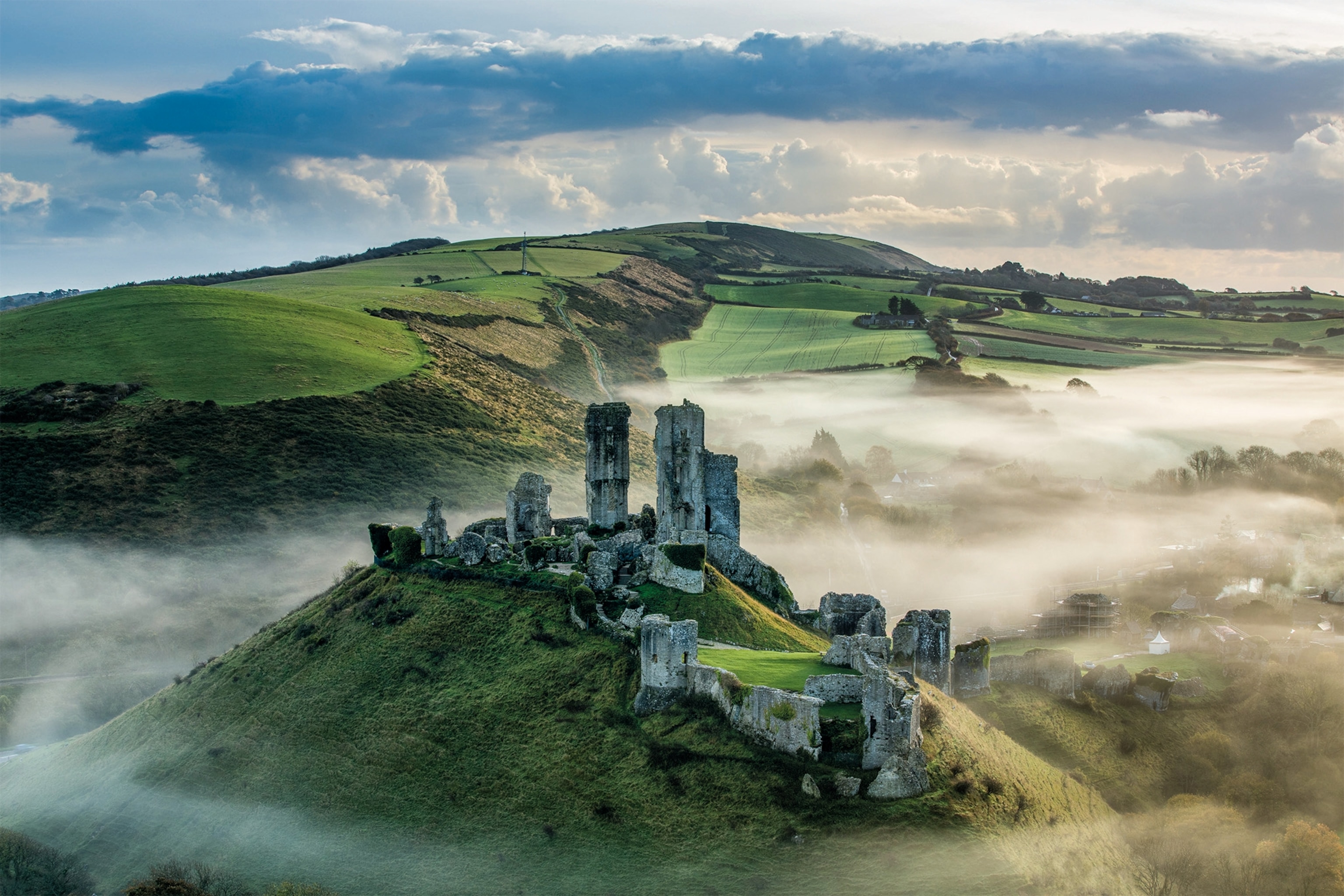
CORFE CASTLEThis fortress was built by William I shortly after his forces arrived from Normandy and conquered England in 1066. John used it as a prison for his political enemies.
DAVID NOTON PHOTOGRAPHY/ ALAMY/CORDON PRESS
After these territorial losses, John moved his main residence to England, something he probably did willingly; John was the first king since the Norman Conquest to speak English well. Determined to take his revenge on France, John reformed the administration, increased taxes, and launched an inquiry into the feudal titles of knights. This provoked resentment among the nobility, but John paid them no heed. A chilling example of how John treated his barons is shown in what happened to William de Braose, who had been a favorite of John’s for years. In 1206 William fell into disgrace, supposedly for not having handed over some money he’d collected from his fiefs to the king. William fled first to Ireland while John confiscated his estates. He then took refuge in Wales, where he helped Prince Llywelyn the Great rise up against John. William eventually escaped to France, but John tracked down his wife and son and locked them in the dungeons of the castles of Windsor and Corfe, where he starved them to death. It was said that William’s wife, Maud, devoured the corpse of her son before dying herself.
All against John
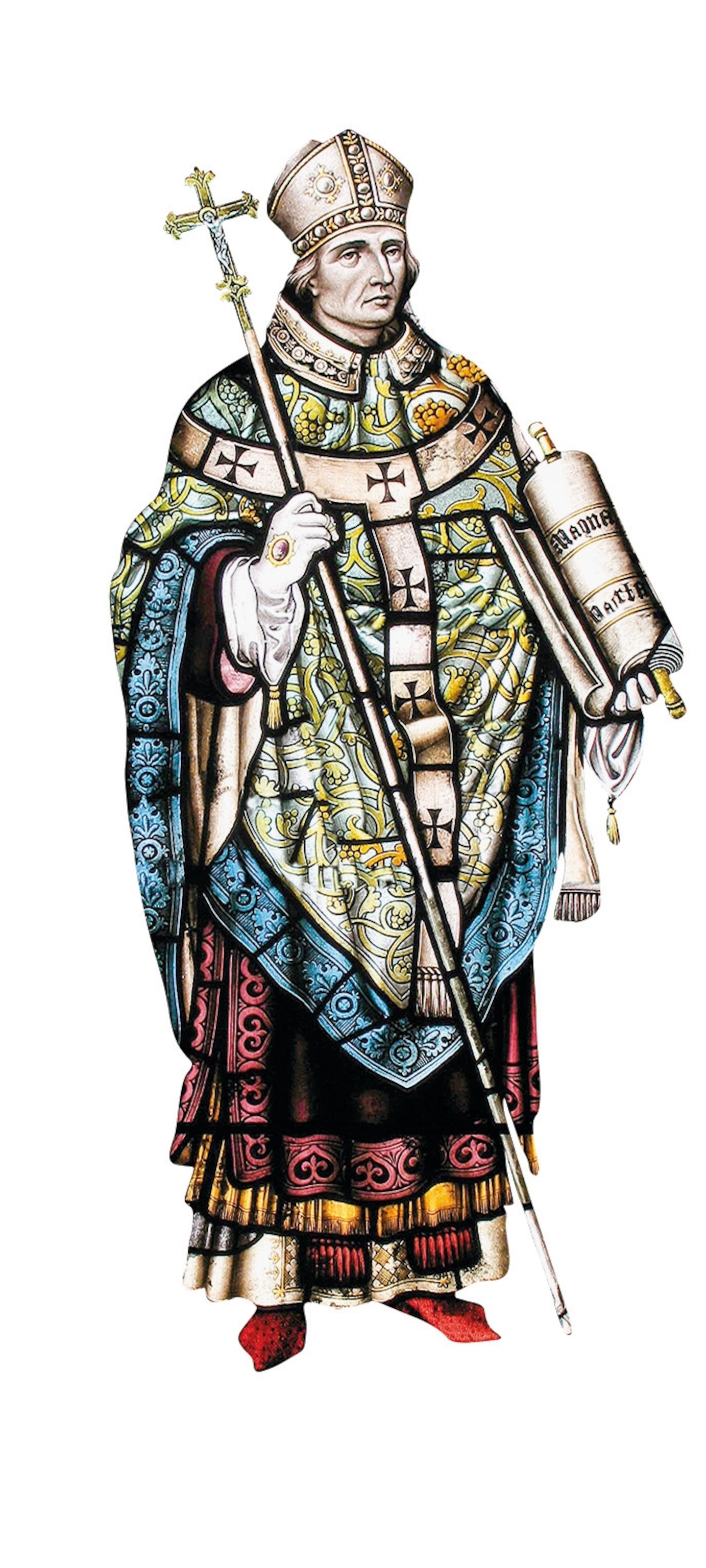
TURBULENT PRIESTArchbishop Stephen Langton holds the Magna Carta in a stained glass window in Canterbury Cathedral.
ACI
As if this were not enough, John’s decision in 1207 to reject the appointment of Stephen Langton as archbishop of Canterbury set the king on a collision course with the papacy. For six years England was placed under papal interdict, which meant that no church services could be held in any church in the country. John took advantage of this situation to fill his coffers with the rents from the vacant ecclesiastical offices. But the papacy’s excommunication of John in 1209 laid the king open to being deposed by his enemies. In 1211 the leading barons of the country organized a plot to kill John during a campaign against the Welsh rebels.Their attempt failed. John tried to wriggle out of this situation by engineering a reconciliation with the church. He declared the kingdom of England a vassal of the papacy and committed to paying it a large sum of money every year.
In return, he hoped the pope would become an ally in his struggle against the barons and against the king of France. But events did not play out as he had hoped. In France, John suffered a definitive defeat against Philip II at the Battle of Bouvines. On his return to England, many nobles rallied against him, marched on London, and finally forced him to sign the landmark charter known as the Magna Carta. Through this document King John put to rest various grievances that the nobility, the church, and other sections of the population had against him. One key demand of the Magna Carta was that his subjects would be judged by courts and not by the arbitrary will of the monarch. Should a monarch violate the terms of the charter, there was provision for a committee of barons to condemn them as a tyrant and depose them.
John repudiated the charter as soon as he’d managed to regain the support of the pope. He died of dysentery soon after, in the middle of a war against his barons, who were trying to impose a French prince as the new king. John was succeeded by his son Henry III, age nine. The unwavering loyalty of a few barons, in particular royal adviser William Marshal, saved the throne of Henry III and the legacy of the Magna Carta. The former king, on the other hand, remained fixed in English collective memory as Bad King John, the odious tyrant immortalized by Sir Walter Scott.
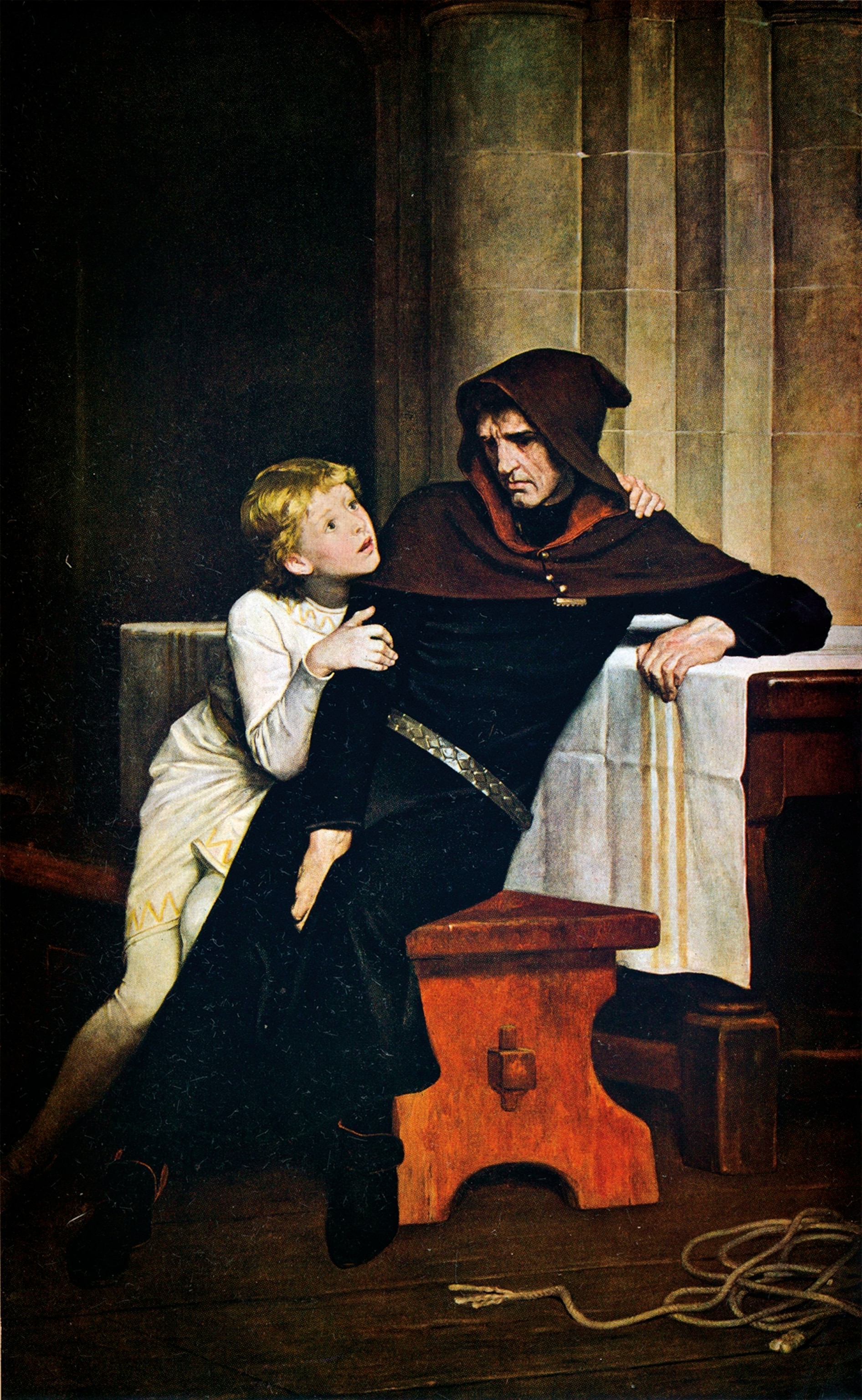
“Prince Arthur and Hubert,” oil painting by William Frederick Yeames, Manchester Art Gallery, Manchester, England.
HERITAGE IMAGES/ALBUM
This story appeared in the July/August 2025 issue of National Geographic History magazine.



